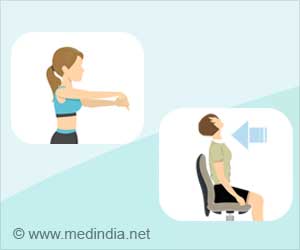Impaired dental status in children with AIDS can adversely affect their quality of life, according to a new Brazilian study.
HIV positive children are more prone to dental caries, candidiasis (thrush), leukoplakia (precancerous lesion on the tongue or inside of the cheeks), herpetic lesions, lymphadenopathy (swelling of the lymph nodes) and parotiditis than other children.According to the Bulletin of the World Health Organization, oral lesions parallel the decline in numbers of CD4+ cells and an increase in viral load and are independent indicators of disease progression. But little is known about the functional, emotional and social consequence of poor oral health in these children. This study was undertaken with an objective to assess the self perception of oral health by HIV positive children who already manifest AIDS symptoms and to assess the associated socio-demographic, behavioral and clinical factors of these children.
A total of 88 Brazilian children in the age group of 10 to 15 years participated in this study. They completed the Child Perceptions Questionnaire for 11-14-year-old children - CPQ11-14 specifically designed to assess oral health-related quality of life (OHR-QoL). The questionnaire contained two overall indices on oral health and wellbeing:
1. "Would you say that the health of your teeth, lips, jaws and mouth is...?" and "How much does the condition of your teeth, lips, jaws or mouth affect your life overall?"
2. 37 specific questions on oral symptoms, functional limitations, emotional wellbeing, and social wellbeing.
Parents and guardians answered a supplementary questionnaire on:
2. Behavioral variables such as the caregiver of the family (mother or other relatives) and toothbrush frequency (twice per day, greater than 2 per day, less than 2 per day).
• Higher HIV viral load associated with poorer ranking in all subscales.
• Having a low CD4+ count (in comparison to reference values for the corresponding age) associated with poorer answers for questions that assessed functional limitations.
• An improved socioeconomic condition associated with better rates in the scale that assessed oral symptoms.
• Children that could not count on their own mother as a caregiver scored lower on the social well being subscale.
• A lower frequency of brushing teeth was significantly associated with worse answers in the functional limitations and emotional well being subscales.
The study reinforced the importance of having the children’s own mothers as caregivers and the importance of home monitoring as an effective resource in oral health promotion.
The investigators of this study concluded that “AIDS-related clinical characteristics associated with more severe impacts on OHR-QoL. Children with more severe AIDS manifestations complained of a poorer status of oral symptoms, functional limitations, emotional and social well being related to their oral health. Brushing the teeth two or more times a day and having their own mother as caretaker associated with improved oral health related quality of life, which reinforce the importance of the attention that these children receive in their own household”.
They further highlighted the need to “integrate the dentist in the interdisciplinary health care team that assists pediatric patients with AIDS, and can instruct health programs that are intended to improve their overall quality of life”.
Source: http://www.biomedcentral.com/1472-6831/11/2
Reference:
http://www.who.int/bulletin/volumes/83/9/700.pdf
Source-Medindia














